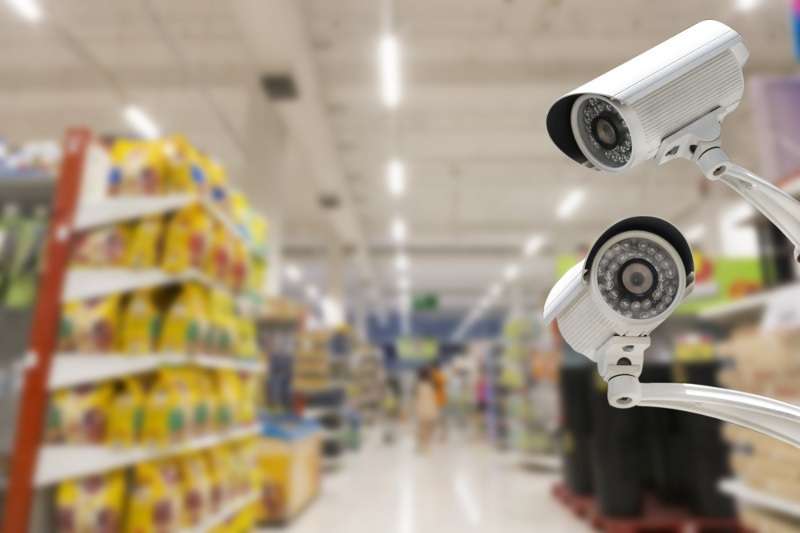Before diving into the vast array of security camera options, it is essential to assess the specific surveillance needs of your retail store. This involves identifying key areas that require monitoring, such as entrances and exits, cash registers, aisles, and storage rooms. The layout of your store will largely dictate the types and number of cameras needed to achieve comprehensive coverage.
Furthermore, considering the potential risks and threats unique to your location and merchandise can help in tailoring a surveillance system that meets your store’s specific demands.
Types of Security Cameras
Once you have a clear understanding of your surveillance needs, exploring the different types of security cameras available on the market is the next step. Each type offers distinct features and advantages suited for various surveillance scenarios.
Dome Cameras
Dome cameras are a popular choice for retail environments due to their discreet design and wide-angle coverage. Encased in a dome-shaped housing, these cameras can blend seamlessly into the store’s decor, making them less noticeable to potential thieves.
Dome cameras are versatile, offering both fixed and pan-tilt-zoom (PTZ) options, allowing for a broad view of the area being monitored. Their design also makes it difficult for onlookers to determine the direction the camera is facing, adding an extra layer of uncertainty for anyone considering illicit activities.
Bullet Cameras
Bullet cameras, named for their cylindrical shape, are another common choice for retail surveillance. These cameras are typically mounted on walls or ceilings and are known for their long-range viewing capabilities. Bullet cameras are ideal for monitoring large, open areas such as parking lots or the exterior of a building. They often come equipped with infrared night vision to ensure continuous surveillance regardless of lighting conditions.
Network/IP Cameras
Network or IP cameras represent the cutting edge of surveillance technology, offering high-resolution video that can be accessed remotely via the internet. This feature enables store owners and managers to monitor their retail spaces in real-time from anywhere, using a computer, tablet, or smartphone. IP cameras are particularly beneficial for multi-location retailers, allowing for centralized monitoring of various sites.
High-Definition (HD) Cameras
For areas that require detailed observation, such as points of sale or high-value merchandise zones, high-definition (HD) cameras are indispensable. Offering superior image quality, HD cameras ensure that facial features, clothing details, and even license plate numbers can be clearly captured. This level of detail can be crucial in identifying perpetrators and providing evidence in the event of theft or fraud.
Key Features to Consider
Selecting the right type of camera is just the beginning. Several key features should be considered to ensure that your surveillance system is effective and efficient:
Resolution
The resolution of a security camera is measured in megapixels (MP) and directly impacts the quality of the video footage. Higher resolution cameras provide clearer and more detailed images, which can be critical for identifying individuals or specific activities within your store. While higher resolution cameras may come at a higher cost, the investment can be justified by the enhanced security and evidence quality they provide.
Low Light Performance
Many retail thefts occur under the cover of darkness, making low light performance a critical feature for security cameras. Cameras with good low light capabilities can capture clear footage in dimly lit areas or during nighttime, ensuring continuous surveillance around the clock.
Storage and Bandwidth
The amount of video footage that can be stored and the bandwidth required to transmit video feeds are important considerations, especially for systems with multiple cameras or high-resolution settings. Evaluating your storage options, whether on-site or cloud-based, and ensuring your network can handle the bandwidth demands of your surveillance system, are crucial steps in the planning process.
Integration Capabilities
In today’s interconnected world, the ability to integrate your security cameras with other security systems, such as alarm systems or access control, can significantly enhance your overall security strategy. Seamless integration allows for a more comprehensive approach to surveillance, enabling automated responses to potential security breaches.
Implementing Your Surveillance System
With a clear understanding of your surveillance needs, the types of cameras available, and the key features to look for, you are well-equipped to select the security cameras that best suit your retail store. It’s important to remember that surveillance technology is constantly evolving, and staying informed about the latest advancements can help in maintaining an effective security posture.
What Is CCTV Monitoring?
CCTV monitoring, or Closed-Circuit Television monitoring, plays a vital role in retail store surveillance. This system involves the use of video cameras to transmit a signal to a specific place, allowing for real-time monitoring and recording of activities within the store. CCTV systems can deter crime, monitor customer flow, and provide valuable evidence in the event of an incident. Integrating your chosen security cameras into a comprehensive CCTV system ensures a robust surveillance solution that can protect your assets and ensure the safety of both customers and employees.
Conclusion
Choosing the right security cameras for your retail store surveillance is a multifaceted process that requires a thorough understanding of your specific needs, an awareness of the different types of cameras and their features, and careful consideration of integration and implementation strategies. By taking a strategic approach to your surveillance system, you can enhance the security of your retail environment, deter potential theft and vandalism, and provide a safer experience for your customers and staff. With the right tools and planning, you can create a surveillance system that not only protects your store but also contributes to its success.

As the editor of the blog, She curate insightful content that sparks curiosity and fosters learning. With a passion for storytelling and a keen eye for detail, she strive to bring diverse perspectives and engaging narratives to readers, ensuring every piece informs, inspires, and enriches.










